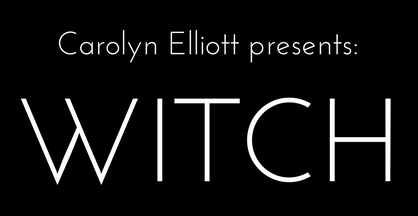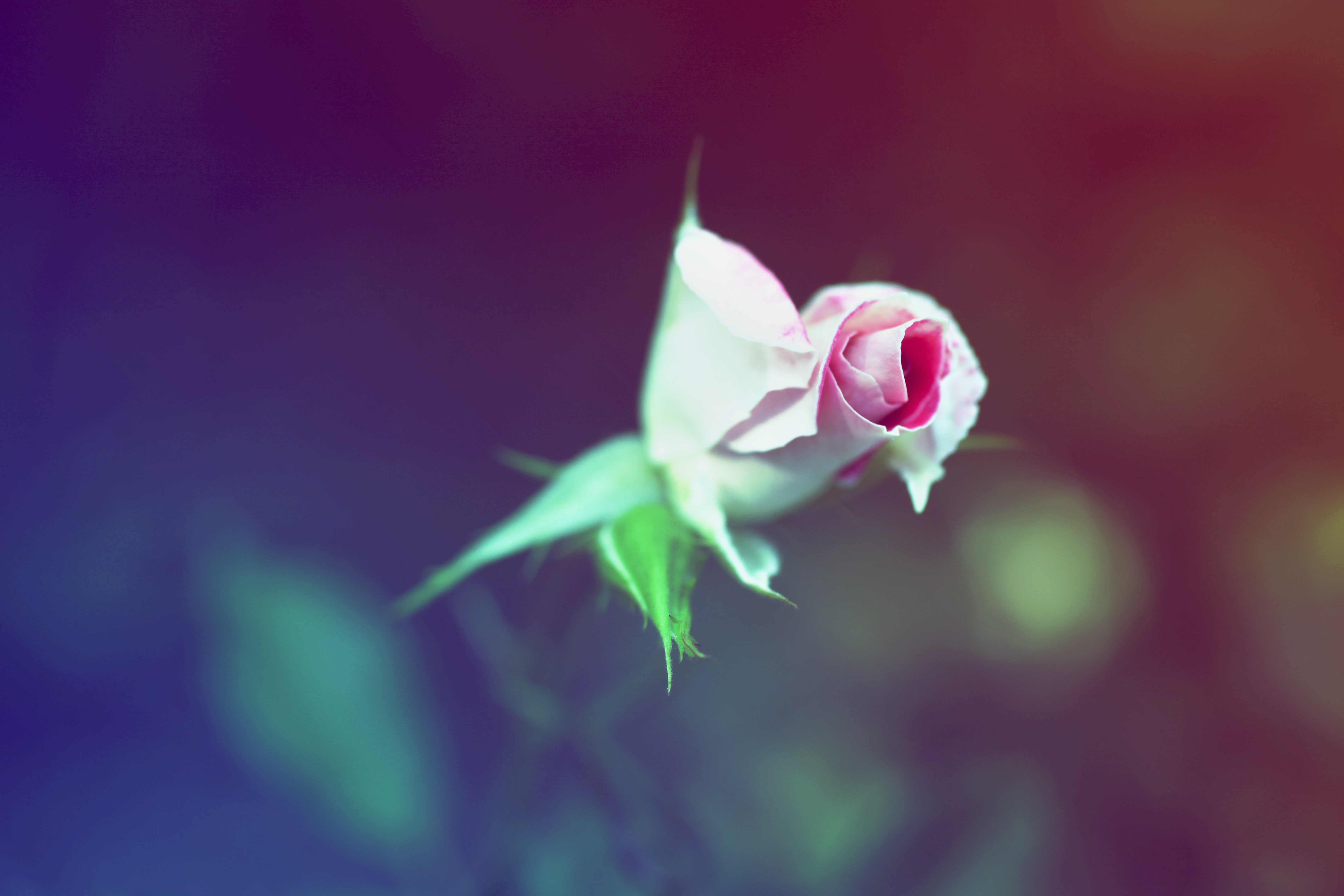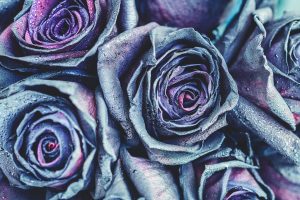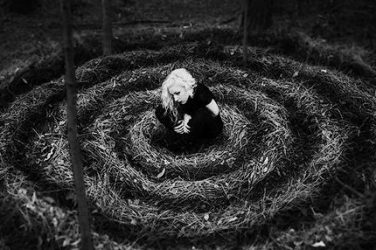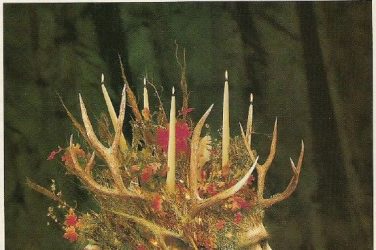by Annie Fox Derek
Note from the editors – Annie Fox Derek is a renown herbalist, gardener, and plant witch who will be offering EARTH: A World-Altering Course on Plant Magic and Medicine in collaboration with Carolyn Elliott, founder of WITCH, and Crystal Woodling, another celebrated plant witch, this spring. Join the WITCH email list using the forms on this page to be notified when the course opens for registration.
Like many of you, I’m sure, I used to try to blend in to the muggle world as best I could. In fact, I have a particular, fox-like, affinity to being able to shape shift and play with invisibility.
But more recently, I have begun to revel in expressing my essential nature:
I am a crazy plant lady.
Yes, I am that person you see as you’re driving by the park, not only hugging, but also talking to that oak tree.
I am the one that cringes when someone unconsciously sits or steps on a medicinal herb.
I am that friend that walks into your home and greets your house plants with an affectionate pat.
And I wouldn’t change it for anything in the world.
The world around me is alive and rich.
And this visceral experience of feeling the vitality and living consciousness of our plant brethren is a gift I wish to share with everyone I know.
Whether you are an aspiring herbalist, a practicing Witch who’d like to use more plants, or someone who simply wants to feel less alone on this beautiful, thriving planet, I offer you these tools to open up your senses to the vibrant world of plant communication.
1. Observation
This gateway is the most physical and basic way that we can learn to communicate with plants.
Though “mundane” in a sense, it can take time and discipline to study and understand.
It is what makes for a skilled gardener or farmer, and is essential in the art of growing food or medicine.
At its most simple level, this is the method of communication that we experience when we see that a plant is wilting and we give it water.
Without using words, that plant has let us know its needs, and through observation, we understand how to meet them.
It gets more and more complex the more that you study and observe.
For example, if you notice leaf discoloration, there may be a vital nutrient missing in the soil, and spots along the plant could be a sign of fungal infestation.
The way to develop this sense is through the physical act of growing plants.
This could be as small scale as keeping a houseplant in your home or on your altar and offering your daily attention and care, or as large scale as growing your own food and medicinal plant garden.
If you, like many others, have taken on the story that you “don’t have a green thumb”, I highly recommend you banish that thought immediately and realize you are made of exactly the same star-stuff as plants.
It may take some time and patience to learn and get the hang of it, but so does learning any new skill or language.
And yes, some plants will inevitably die. In my opinion, there’s no better place to confront your fear of mortality than the compost bin.
2. Empathy
When we are children, we begin learning how people communicate their emotions by observing their mannerisms, facial expressions, and words to understand how they feel.
Once we learn these patterns, a great deal is communicated beyond words. If we’re innately empathic people, we may even feel in ourselves how others are feeling.
As we begin to have a grasp of how the plant world communicates in a physical sense, how we hear their messages may begin to synthesize differently.
To return to the example of giving water to a wilting plant: the patient observer and caretaker of plants will likely notice the more subtle signs that present itself well before a plant is fully wilted.
Perhaps the leaves are just slightly less swollen, or maybe they even walk by, and without consciously making an observation, just seem to “know” that the plant needs water.
In my experience, this can show up as a very personal and emotional feeling.
I can look at the plants in my garden and feel how elated my tobacco plant is as it’s flowering.
Likewise, I can feel when another plant is struggling from lack of sunlight or soil depletion.
When wildcrafting, this skill is essential.
It takes observation of the environment, the physical appearance of plants, and also an empathic tuning in, to know if a plant should be harvested for medicine.
This kind of empathic communication requires the patience of observation, and also a sense of self knowing.
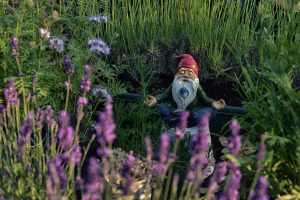
A practice for developing a sense of empathy with the plant world is through the simple yet profound act of
plant meditation:
Find a calm and peaceful place outside where you can comfortably sit.
Walk around and notice what plants you are drawn to.
If there is one that you notice in particular, sit with that one.
Enter into a meditative state by focusing on your breath.
Now watch and listen.
Keep your eyes open, but relaxed.
Tune in to the experience that the plant is having.
Are there insects crawling on it? Are the leaves moist or dry?
Notice what feelings come up from inside you when you observe this plant? Write them down in your magical journal.
If you’re new to this practice, feelings of doubt may arise, and you may think that these feelings are only your projections. I again ask that you banish these doubts!
And remember you are not separate from the Earth. Trust yourself, and trust the web of life that you exist in.
3. Patterns
The third gateway is of a more Mercurial nature, which is to look at the specific patterns expressed by plants.
This is often referred to by herbalists and naturalists as the Doctrine of Signatures, which shows us not just how a plant is in its own nature, but also how it may interact with us.
A common example of this is the plant Eyebright, whose flowers resemble the human eye and provide a remedy for eye diseases such as conjunctivitis.
The Doctrine of Signatures can take form in many different ways: from our senses (sight, smell, touch, taste, and hearing) to how and where it’s growing.
Comfrey, for example, is incredibly useful at mending bones, and has a great ability to encourage cell growth and regeneration.
If you’ve ever grown Comfrey, you see that this is reflected in how it grows. One tiny piece of a root can grow a whole new patch.
Its propensity for growth and regeneration is quite obvious!
This kind of Mercurial understanding can be useful when you are doing ritual work and propitiating certain deities, too.
There’s plenty of resources on the internet, and this is a lovely way to learn what plants to use on your altar, but there’s a special magic when you begin to see how and why these plants have certain associations.
On an experiential level, you must again go outside and place yourself in nature.
Start with your senses and notice colors, textures, smells. What do they remind you of?
Is this plant erect or sprawling, growing in a wet area or a dry area, are its leaves rough and textured or smooth and slippery?
Take careful notes of what you observe.
Though I don’t recommend ingesting any plant when you are not sure if it is safe or edible, it’s fun to take these notes home and compare what you observed to the known qualities of a medicinal herb or plant.
You’ll be surprised by what you can learn through this profound practice.
4. Dreaming
When I say dreaming, I am referring to both the obvious nighttime dream state, which can bring us messages from the mystery and subconscious, and also to the waking dream time.
If you are already on the path of Magic, you probably have realized by now that our waking life is very much a dream, and to wake up in that dream is to have a magical relationship with reality.
Once you begin to cultivate a relationship with the plant world, it is highly likely that they will begin to communicate to you in both your night time dreams, and the playful reality of the daytime dream.
Pay close attention.
When we enter the fourth gateway of plant communication, we are entering the more subtle and magical realm.

This gateway opens for the adept magical seeker, who has already recognized that their will is one with the universal will.
So where do we start? Recording your dreams each morning is a great practice to open this channel.
Anytime that a plant shows up in your dreams, take record, no matter how trivial it may seem. How did it show up? How did you feel about it?
Compare this to what is happening in your life at the time. How does it relate?
In the waking dream of life, these messages show up most often in the form of synchronicity.
If there is a plant we need to work with energetically and/or physically, it will often show itself to us in strange, synchronistic ways.
Most recently I was doing some deep dreaming work with Rose.
Over the course of a week, a friend brought me a beautiful medicine containing roses, I was given a book solely written on the magic of roses, and found myself amongst rose bushes more often that usual.
A coincidence? No.
Rose was responding to my attention, and teaching me about its medicine.
When I’m working with clients as an herbalist and guide, these messages can come as intuitive “pings”; during our conversation I might smell a certain plant or a flash of it could come as a vision.
I am filled with gratitude each time I hear one of these messages, and it affirms in me a deep sense of connection. And it is from this place of gratitude that I work with plants.
I highly encourage you, as you begin to receive these messages more deeply, to make offerings to plants that assist or teach you.
This can be in the form of water, food, tobacco, song, or even words of praise. Like any relationship, it is built on trust, reciprocity, generosity, and love, so remember to give back to that which gives to you.
Plants are great allies for any magical practice, and speaking their language can be a great asset as you grow.
I deeply believe that our plant brethren are always reaching out for connection, and even miss us. It’s up to us to open up and listen.
If you’re interested in developing these skills further, keep your eyes open for EARTH: A World-Altering Course on Plant Magic and Medicine, a collaboration between myself, fellow Plant Witch Crystal Woodling and beloved Witch Extraordinaire, Carolyn Elliott. Registration will open this fall.
IN CONCLUSION
If this essay resonates with you, please join our WITCH email list by using the forms on this website so we can stay in touch.
About the Author:
 Annie Derek is a plant witch and medicine woman based in the Appalachian foothills of Pittsburgh PA. She can usually be found communing with the rivers and forests, wildcrafting herbal medicines, and contemplating non-dual existence with friends. Stay connected on facebook and instagram, and look for future collaborations with the WITCH community!
Annie Derek is a plant witch and medicine woman based in the Appalachian foothills of Pittsburgh PA. She can usually be found communing with the rivers and forests, wildcrafting herbal medicines, and contemplating non-dual existence with friends. Stay connected on facebook and instagram, and look for future collaborations with the WITCH community!
featured image by Paula Duró
